A sit down with Dr Zhugen Yang
12/05/2020
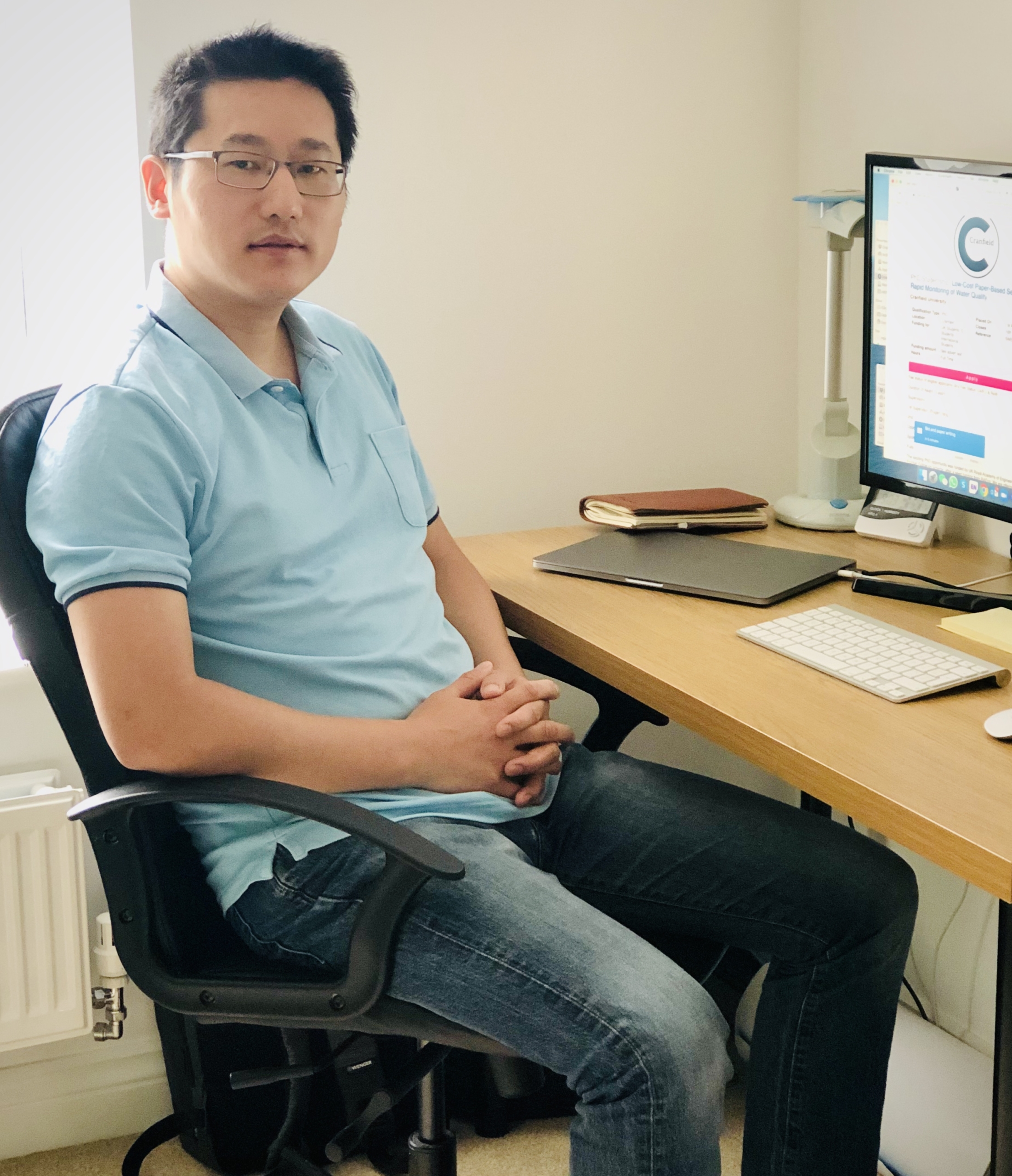
Can you tell me a bit about your background?
I’m currently a Lecturer in Sensor Technology with Water Science Institute at the School of Water, Energy and Environment. I am a material engineer by training but I changed my area at PhD to Biomedical Engineering. As a result, my expertise is really highly disciplinary involving chemistry, materials, nanotechnology, medical science, environmental science and some biomedicines.
I gained my BEng and MSc in China, then my PhD from the University of Lyon in France. I started my career as a postdoc at the University of Cambridge, then moved to the position of a Marie Curie Fellow at the University of Bath where I started to work on sewage sensors for public health. I then secured an academic position at the University of Glasgow after I was awarded a UK NERC Independent Personal Fellowship in Glasgow. I relocated to Cranfield in April 2019 together with my Fellowship.
What does Cranfield mean to you?
Cranfield is exciting as it is a very unique, intensive post grad university. Here people are really focused on research and trying to make an impact both academically and industrially.
My research mainly focuses on the development advanced sensor technology, in particular rapid and low-cost device to address challenges in water, environment and health.
Historically Cranfield had a unique world leading reputation in the field of biosensor and bioelectronics. Professor Anthony Turner, who was the previous Principal of Cranfield University at Silsoe, made a tremendous impact in biosensors, and serves as editor-in-chief for the top journal Biosensors and Bioelectronics in the field. I am hoping Cranfield will rebuild this impact nationally and internationally.
How do you plan to bring the history back?
I am heading-up the new sensors lab, funded by UK Collaboratorium for Research on Infrastructure and Cities (UKCRIC), which has been equipped a state-of-art facilities for sensors development. This is a unique national sensors lab for water that will focus on the development of a range of sensor technology to address challenges in water environment and health. I am very excited to explore the underpinning science in sensors and to develop novel technologies to address those challenges. Cranfield has a really good track record of collaborating with industry, and this is a very good opportunity to carry on the cutting-edge research at the interface of engineering, analytical science and biotechnology within the support of Cranfield.
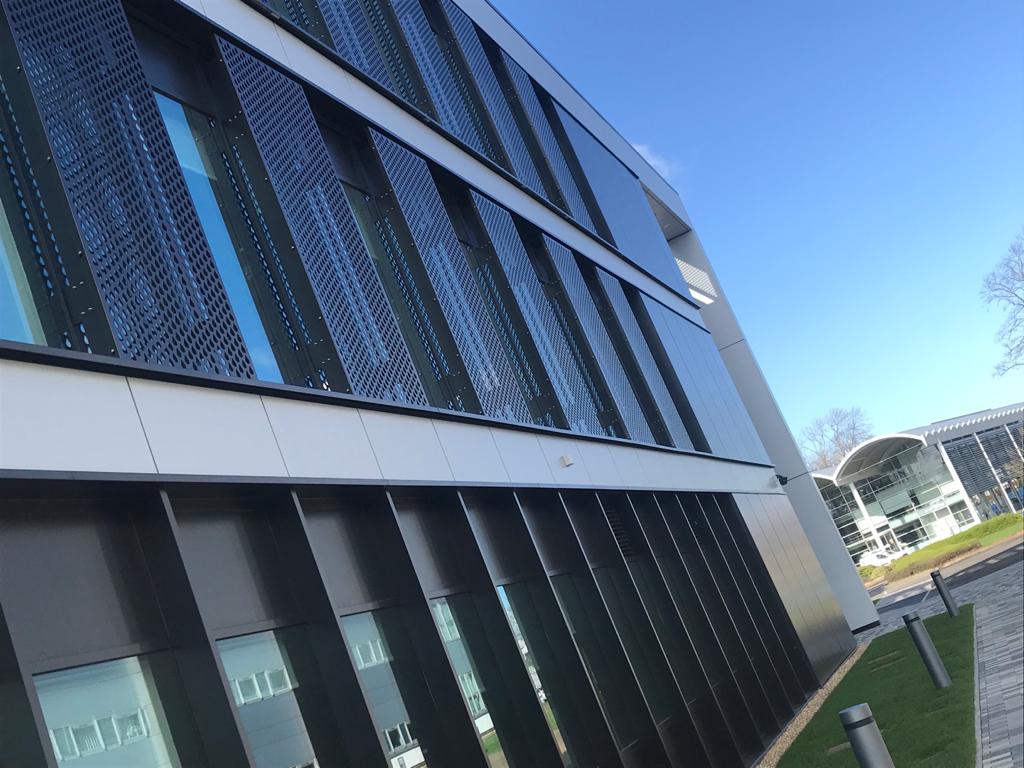
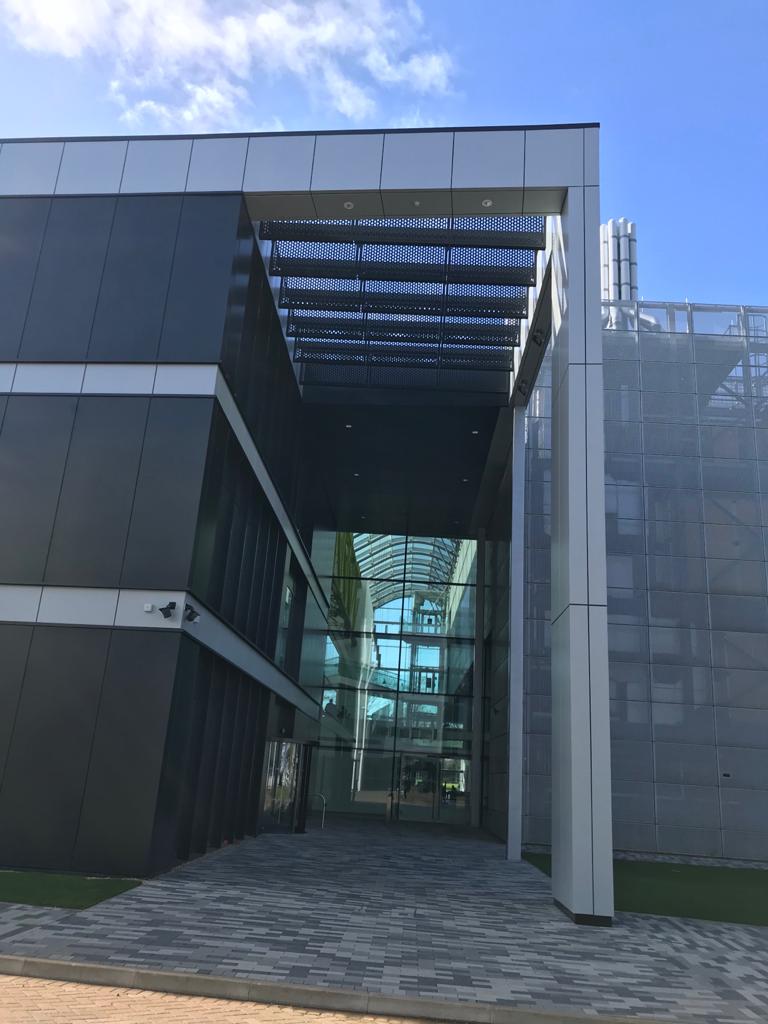
Can you tell me about your area of research?
My research generally falls into the areas of biosensing and microfluidics, which is a highly multidisciplinary including biomedical engineering, analytical science, environmental science and nanotechnology. The aim is to develop ultrasensitive, selective, low-cost, easy-to-use sensors and device for the application of monitoring water quality, environmental health and biomedical diagnosis. For example, I have recently developed a low-cost paper biosensor for rapid analysis of pathogens for diagnosis of infectious disease and water quality, which has been tested in India and Africa.
Another area is to develop rapid sensors for monitoring of metabolites of illicit drugs (e.g. cocaine) in wastewater, also namely wastewater-based epidemiology to understand the community-wide drug consumption and public health. This technique was initiated in Europe, but it has now been demonstrated as a very effective way for monitoring of drugs and health globally, for example in Australia, even enabling to help the police to trace the drug source and fight against criminals in China. More recently, we have proposed to testing COVID-19 using paper-based sensors for early warning of SARS-COV-2 within the population.
What are you working on now?
One of my recently funded projects is to develop a low-cost paper origami device to rapid test microbial contamination in drinking water. The technology was initially developed to quickly identify bovine infections in Indian farm, which can spread quickly causing significant impact.
The paper test is just like the pregnancy test and is very quick to produce accurate results within 1 hour, traditionally this would take several days or longer. In addition, the device is wax-printed which is very cheap to manufacture – less than £1.
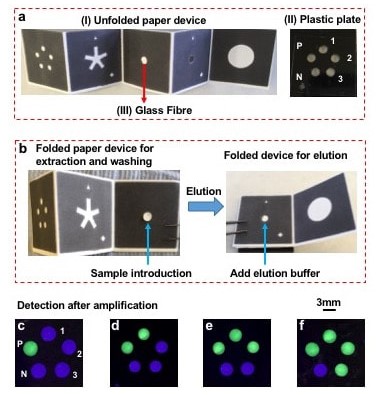
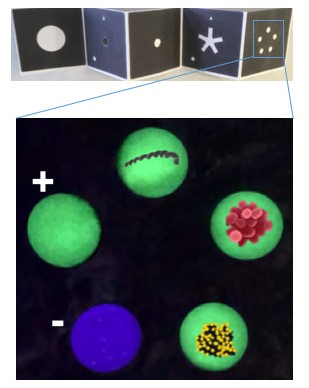
I have managed to extend this technology to address water safety challenges and test the contamination in water, particularly drinking water. This will be useful in low-resource setting such as low and middle-income countries. Specifically we aim to rapid detect a very low concentration of bacteria to indicate if the water is contaminated or not. At the same time we are trying to detect different species of these organisms to look at the dynamic pollutants in water.
I am collaborating with Scottish Water, who have provided us with samples, and then conduct a comparative study with traditional methodology in the lab. Collectively we are trying to deliver this device to do the field testing of the water through really rapid and low cost ways.
I also have a funded project by Royal Academy of Engineering, which aims to translate this low-cost technology to Nigeria to rapid test of drinking water. I am also interested in developing an ultrasensitive sensor for tracing resistance gene to combat the global antimicrobial resistance issues.
This approach could provide an effective and rapid way to predict the potential spread of novel coronavirus pneumonia (COVID-19) by picking up on biomarkers in faeces and urine from disease carriers that enter the sewer system.
Rapid testing kits using paper-based devices could be used on-site at wastewater treatment plants to trace sources and determine whether there are potential COVID-19 carriers in local areas.
In the case of asymptomatic infections in the community or when people are not sure whether they are infected or not, real-time community sewage detection through paper analytical devices could determine whether there are COVID-19 carriers in an area to enable rapid screening, quarantine and prevention.
If COVID-19 can be monitored in a community at an early stage through WBE, effective intervention can be taken as early as possible to restrict the movements of that local population, working to minimise the pathogen spread and threat to public health.
What do you like most about working at Cranfield?
It is a very intensive university and everyone is very passionate about their own research, but also collaborative. An emphasis of strong links with industry partners from Cranfield may provide very unique opportunities, which is mutually beneficial for our industry partners and our academic activities. That is very unique in the UK.
Cranfield is also really dynamic and friendly. In the Water Science Institute, we sit in an open plan office so it is easy to speak with senior people, colleagues and PhD students to discuss or make decisions or catch up. It’s really a good way to be as a team.
There are a lot of events which are closely linked with industry partners to try and disseminate the technology into industry and work with them.
What do you love about your role?
Currently I pretty much enjoy the freedom to carry on my own research and work with colleagues from different backgrounds. My expertise in sensor technology is very different to my other colleagues in the water centre. This provides me with very good opportunities to collaborate with people who are experts in water treatment and other areas.
What do you think is the biggest challenge in your role?
Research is always challenging, but I like it when you have a problem, you have to think of a strategy, and link with your colleagues or collaborators, to find a way to sort it out. Currently, I am working very hard to raise funding to support more group members to work in this fantastic sensors lab, from Master, PhD to Postdoc level. This will just take a bit time for the team building.
For a more detailed insight into Zhugen’s research…
www.zhugenyang.com
Categories & Tags:
Leave a comment on this post:
You might also like…
Preparing your work for Turnitin submission
Before submitting your work into Turnitin for similarity checking, if you have used referencing software then you may need to take some important steps first. Mendeley and Zotero integrate with MS Word by embedding field ...
The fast track to supercar engineering: My Cranfield journey
It’s been a dream come true to work on some of the world’s most prestigious supercars – the Aston Martin Valhalla, McLaren 750 & Artura, the GMA T.33. But every successful ...
Automotive Engineering: From student to hypercar innovation at Rimac
We sat down with recent graduate Thomas Perrin, to discuss how his year on the MSc in Automotive Engineering at Cranfield University propelled him from the lecture hall directly into the ...
What this year at Cranfield really meant to me
Every Cranfield journey is unique. In this alumni reflection, Zachea Scicluna shares what her year at Cranfield truly meant, from facing uncertainty to gaining hands-on experience in industry-backed projects. I’ve been reflecting (and delaying) ...
Preparing for assignments and exams?
Sorry! We know it seems a bit mean to mention the exams in January rather than looking forward to the break before it! However, we know many of you will be thinking about your forthcoming ...
Screening for FTSE 100 companies on Bloomberg
So you’re researching an index and need some data on its constituent companies? Bloomberg’s Equity Screening tool makes light work of this, not just for the FTSE, but for indices, exchanges and sectors worldwide. Type EQS ...







Dear Dr. Yang,
my congratulations on your success in developing paper DNA test.
Please let me if your test can be available for local study ?
best regards,
Darius Jack
Hello Dr. Yang
I really like the real-time results got from monitoring pathogens e.g. E.coli in drinking water. This can save a lot on workforce and downtime.
I wish the best ahead with this novel hi-tech technology.